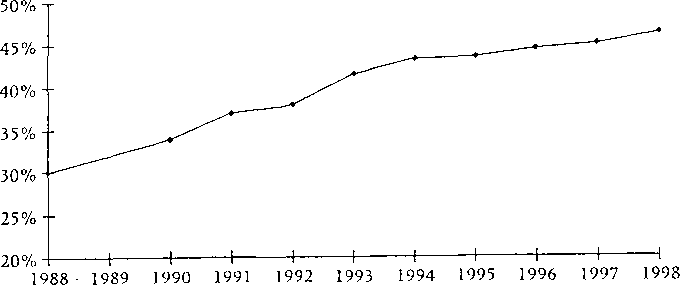145
designed only for the present A-Ievel cohort” (Mathieson 1992:193), so were not
going to fulfil the need to include the widening ability range staying on in sixth forms
and further education following the improving attainment rates achieved with GCSE.
[See Figure 4-1] As for their broadening function, this was limited because most
schools were able to fund only a very limited number of subjects at AS level.
Figure 4-1 Rising GCSE Attainment Rates
Figure 23 Pupils attaining five or more higher-grade GCSE passes,
England, 1988-98

Source: adapted from data published in Payne (1995) and the Department for Education and
Employment.
(Gillbom 2000: 34)
AS students were routinely со-taught with those taking the full A level but attended
only half the lessons. This practice cast them as lesser versions of the real thing.
Before the limitations of AS levels had become fully apparent, the government in
March 1987 asked Professor Higginson to investigate structural means of widening
students’ experience.
More intriguing information
1. Review of “From Political Economy to Economics: Method, the Social and Historical Evolution of Economic Theory”2. Experience, Innovation and Productivity - Empirical Evidence from Italy's Slowdown
3. The technological mediation of mathematics and its learning
4. The name is absent
5. The name is absent
6. THE WELFARE EFFECTS OF CONSUMING A CANCER PREVENTION DIET
7. TECHNOLOGY AND REGIONAL DEVELOPMENT: THE CASE OF PATENTS AND FIRM LOCATION IN THE SPANISH MEDICAL INSTRUMENTS INDUSTRY.
8. Une nouvelle vision de l'économie (The knowledge society: a new approach of the economy)
9. Momentum in Australian Stock Returns: An Update
10. Critical Race Theory and Education: Racism and antiracism in educational theory and praxis David Gillborn*